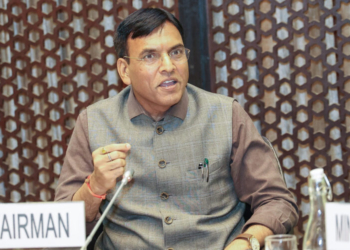New Delhi: The Union Cabinet on Tuesday approved the construction of the 4-lane Paramakudi-Ramanathapuram section stretching across 46.7 km in Tamil Nadu, at a total capital cost of Rs 1,853 crore.
Currently, connectivity between Madurai, Paramakudi, Ramanathapuram, Mandapam, Rameshwaram, and Dhanushkodi is dependent on the existing 2-lane National Highway 87 (NH-87) and associated State Highways, which experience significant congestion due to high traffic volumes, especially in densely populated stretches and key towns along the corridor.
To address these challenges, the project will upgrade 46.7 km of NH-87 from Paramakudi to Ramanathapuram to a 4-lane configuration. This will decongest the existing corridor, improve safety, and cater to the mobility needs of rapidly growing towns such as Paramakudi, Sathirakudi, Achundanvayal and Ramanathapuram, according to the official statement issued after the meeting.
The project alignment integrates with 5 major National Highways (NH-38, NH-85, NH-36, NH-536, and NH-32) and 3 State Highways (SH-47, SH-29, SH-34), providing seamless connectivity to key economic, social, and logistics nodes across southern Tamil Nadu, the statement explained.
Additionally, the upgraded corridor will enhance multi-modal integration by connecting with two major railway stations (Madurai and Rameshwaram), one airport (Madurai), and two minor ports (Pamban and Rameshwaram), thereby facilitating faster movement of goods and passengers across the region.
Upon completion, the Paramakudi-Ramanathapuram section will play a pivotal role in regional economic growth, strengthening connectivity between major religious and economic centres, boosting tourism to Rameshwaram and Dhanushkodi, and opening new avenues for trade and industrial development. The project will also generate approximately 8.4 lakh person-days of direct and 10.45 lakh person-days of indirect employment, and will open new avenues of growth, development and prosperity in surrounding regions, according to the statement.
The project will be implemented under the Hybrid Annuity Mode (HAM). The salient features of the model include that the project concessionaire shall be selected through an open, transparent, and competitive bid mechanism.
Support of 40 per cent of the Bid Project Cost will be payable to the concessionaire by the National Highway Authority in five equal instalments linked to project completion milestones.
The concessionaire will have to initially bear the balance 60 per cent of the project cost through a combination of equity and debt and construct the project highway.
(IANS)
















